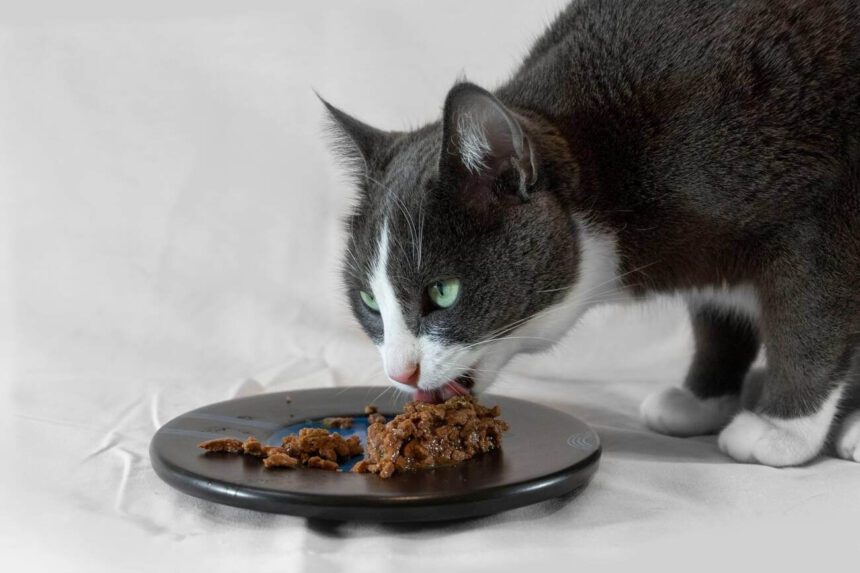Are you tired of seeing your feline friend turn up their nose at their food? Or maybe you’ve noticed that their kibble just doesn’t have that same crunch it used to. Well, I’ve got you covered!
In this comprehensive guide, we’re going to show you how to keep cat food fresh. From dry kibble to wet food to homemade meals, we’ll explore all the tips and tricks you need to keep your cat’s meals as fresh as can be.
Understanding the Importance of Fresh Cat Food
Before we jump into the nitty-gritty of keeping cat food fresh, let’s take a moment to understand why it’s so important. Just like us humans, cats appreciate a tasty, nutritious meal. Stale food not only lacks flavor but can also lose its nutritional value over time. So, if you want to keep your furry friend healthy and happy, fresh food is the way to go.
How To Keep Your Cat’s Food Fresh? The Basics
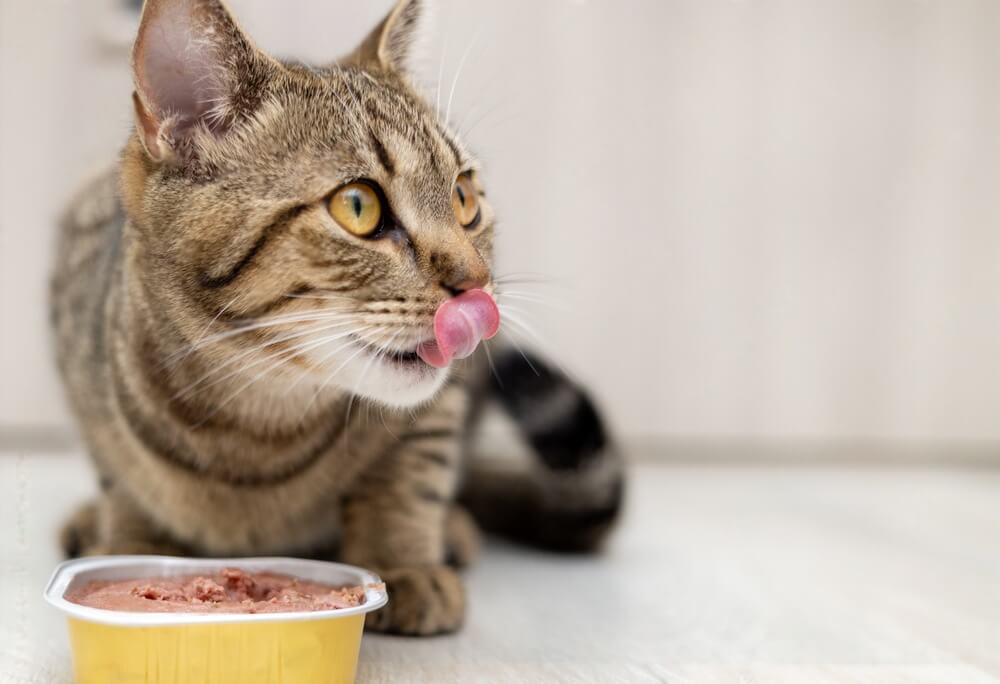
Now, let’s get down to business. Here are some essential tips to help you keep your cat’s food fresh and delicious:
1. Store it Right: First and foremost, store your cat’s food correctly. Most cat foods come in resealable bags or cans with lids.
Make sure to seal them tightly after each use to keep the air out. If you use canned food, transfer any leftovers to an airtight container.
2. Cool and Dry: Find a cool and dry spot to store your cat’s food. Heat and humidity can make it go bad faster than you can say “meow.” Avoid leaving it in direct sunlight or near a heater.
3. Rotate Stock: Just like with your own groceries, use the oldest cat food first. When you buy a new bag or can, place it behind the older ones to ensure your kitty always gets the freshest food.
4. Watch the Expiry Date: Cat food comes with an expiry date for a reason. Always check the date before you buy it, and never use food that has passed its expiration date.
5. Divide and Conquer: If you buy cat food in bulk, consider dividing it into smaller portions and storing them separately. This prevents the entire supply from being exposed to air and moisture.
6. Avoid Freezing: While freezing cat food might seem like a good idea, it can change the texture and taste. It’s best to stick to cool, dry storage.
7. Clean Bowls: Keep your cat’s feeding bowls clean. Leftover bits of old food can mix with the new stuff and spoil it, so give those bowls a good wash regularly.
8. Use Resealable Bags: If you buy dry cat food, look for brands that come in resealable bags. These bags are designed to keep the food fresh for longer.
9. Portion Control: If you have a big bag of dry food, use a scoop to measure portions. This way, you’re not constantly opening and closing the bag, exposing the food to air.
10. Consider Treats: If your cat is on a special diet, consider using treats instead of leaving their regular food out all day. This can help keep the food fresher for longer.
11. Sniff Test: Trust your nose! If the cat food smells off or just not quite right, it’s probably time to say goodbye. Remember, if it’s not fit for a king, it’s not fit for your cat.
12. Canned Food Capers: Once you’ve opened a can of cat food, transfer any leftovers to a sealed container and pop it in the fridge. Think of it as tucking the food in for a short nap – it stays fresh and ready for the next meal.
Benefits of Fresh Cat Food

Now that you know how to keep your cat’s food fresh, let’s talk about why it’s worth the effort. Fresh cat food offers a whole host of benefits for your furry friend:
Fresh cat food, which is often made with fewer preservatives and more natural ingredients compared to traditional commercial cat food, offers several benefits for your feline friend:
Improved Digestion
Fresh cat food typically contains high-quality proteins and natural fibers, which can aid in better cat digestion.
This is particularly beneficial for cats with sensitive stomachs or digestive issues.
Enhanced Nutrition
Fresh food often contains a balance of nutrients closer to a cat’s natural diet.
This means it can provide more essential vitamins, minerals, and amino acids that cats need to stay healthy.
Better Hydration
Since fresh cat food often has higher moisture content than dry kibble, it can help keep your cat well-hydrated, which is especially important for cats that don’t drink enough water on their own.
More Appealing Taste
Many cats prefer the taste of fresh food, which can be particularly important for picky eaters.
The improved flavor can encourage better eating habits and ensure they get the nutrition they need.
Reduced Risk of Obesity
Fresh cat food is often less processed and may have fewer carbohydrates than some commercial cat foods. This can help your cat maintain a healthy weight.
Fewer Allergens and Additives
Fresh cat food typically contains fewer artificial additives, colors, and preservatives, which can benefit cats with allergies or sensitivities to certain ingredients found in processed foods.
Improved Coat and Skin Health
The higher quality of ingredients in fresh cat food can contribute to a shinier coat and healthier skin, as these foods are often rich in essential fatty acids and other nutrients that support skin and coat health.
Tailored Nutrition
Some fresh cat food brands offer customized meal plans based on your cat’s age, breed, activity level, and health issues, ensuring a more tailored nutritional profile for your cat’s specific needs.
It’s important to consult with a veterinarian before making any significant changes to your cat’s diet, as they can provide guidance based on your cat’s individual health and nutritional needs.
How To Keep Dry Cat Food Fresh
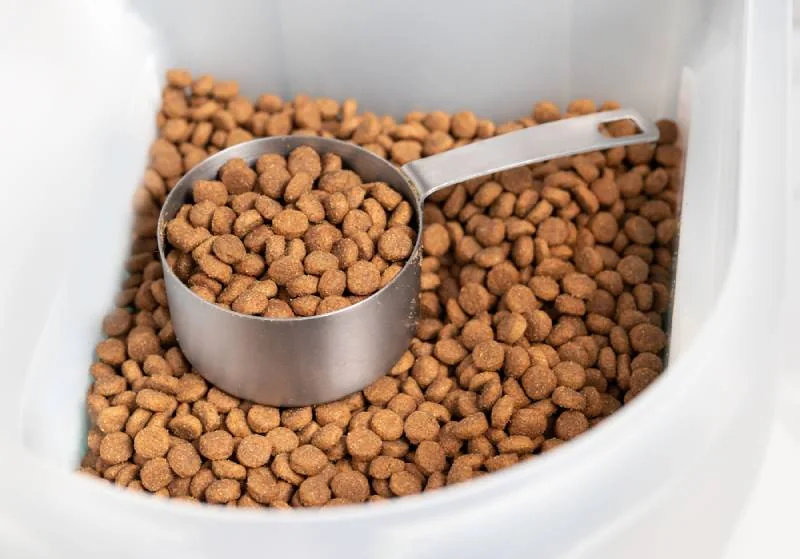
After each use, I always seal the bag tightly to keep dry cat food fresh.
This prevents air and moisture from getting in. I also store the food in a cool, dry place away from direct sunlight.
Sometimes, I transfer the food into an airtight container to maintain its freshness longer.
Lastly, I check the expiration date regularly and don’t buy more than my cat can consume in a month to ensure it doesn’t go stale.
How To Keep Wet Cat Food Fresh
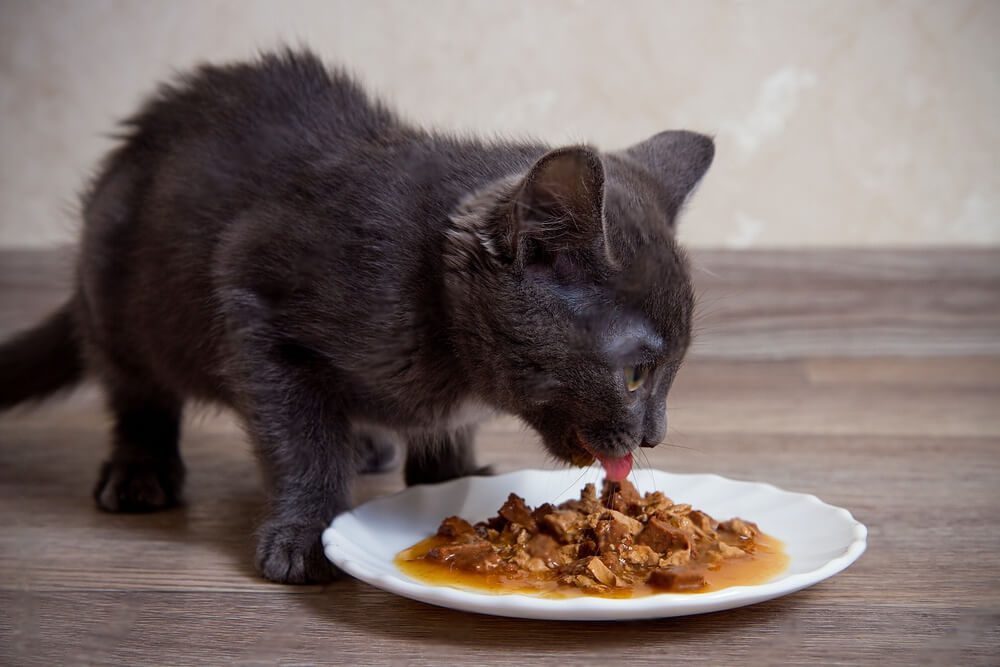
To keep wet cat food fresh, I refrigerate any unused portions immediately.
I use a lid or plastic wrap to cover the can or transfer the food to an airtight container. I make sure to use it within a few days.
I bring the food to room temperature for serving, as cats prefer it that way.
I avoid leaving wet food for over 30 minutes to prevent spoilage and bacterial growth.
How To Keep Homemade Cat Food Fresh

To keep homemade cat food fresh, I immediately refrigerate what my cat won’t eat right away.
I use airtight containers to store it, which helps it stay fresh for up to five days.
For longer storage, I freeze the food in portion-sized containers. When it’s time to use the frozen food, I thaw it in the refrigerator overnight.
I always make sure to heat it slightly before serving, as cats prefer their food at body temperature or slightly warmer. It’s important to never re-freeze thawed food.
How To Keep Canned Cat Food Fresh
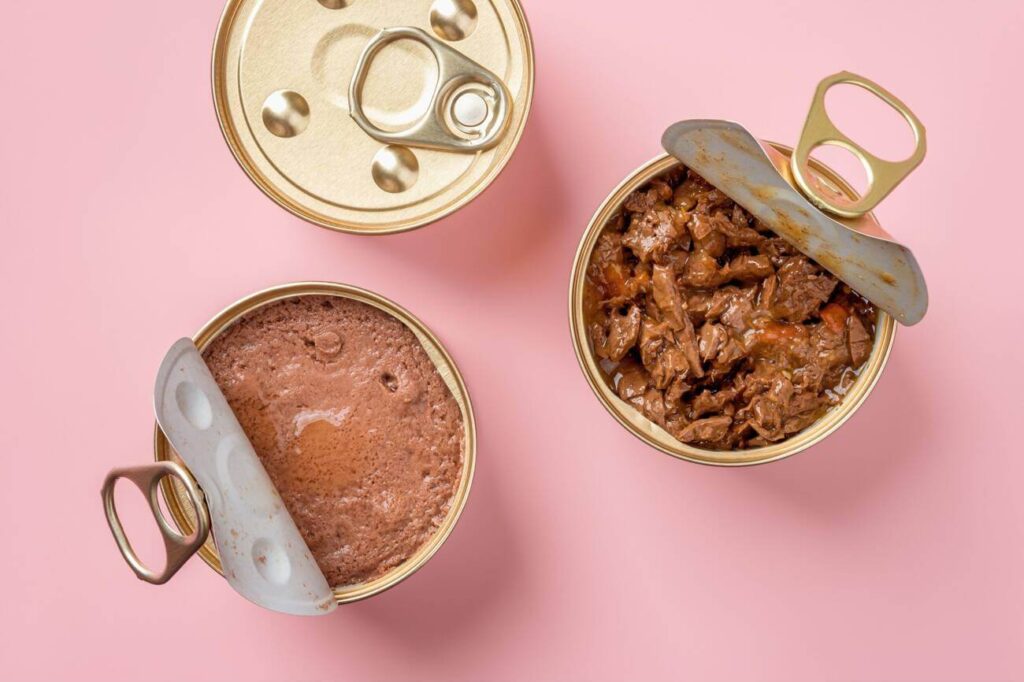
When kept in a cool and dry place, an unopened can of cat food can stay fresh for an extended period, often lasting for years.
However, purchasing only as many cans as you will use before they approach their “best by” dates is advisable.
After opening, it’s important to refrigerate the canned food and use it within seven days.
I either cover the can with a plastic lid designed for pet food cans or transfer the food into an airtight container.
In the fridge, the food stays fresh for up to 7 days. When it’s time to feed my cat again, I take out only what’s needed and let it reach room temperature, as cats don’t like cold food.
It’s important not to leave canned food open for more than 4 hours to avoid spoilage.
How can I make my cat food last longer?
You can use several effective strategies for dry and wet cat food to make your cat food last longer.
For dry cat food:
◉ Store it in its original packaging to protect its nutrients. The packaging is usually designed to keep out air and moisture, which are the main causes of spoilage.
◉ After opening, seal the bag using a clip or rubber band. If using a storage container, keep the food in its original bag and place the bag in the container to prevent the food from taking on the odor of the plastic.
◉ Choose a cool, dry, and dark place for storage, away from sunlight and high temperatures, to prevent the degradation of nutrients.
◉ Rotate your stock by using older food first and labeling containers with purchase and expiration dates.
◉ Consider portioning the food into smaller containers or resealable plastic bags, reducing exposure to air and humidity each time the food is accessed.
◉ Regularly inspect the storage area and the food for signs of spoilage like mold, off-odors, or pest droppings, and regularly clean storage containers.
For wet cat food:
◉ Once opened, store it in the refrigerator and use it within seven days. Cover the can securely or transfer the food to an airtight container.
◉ For unused portions, consider freezing single-serve portions and thawing them as needed.
◉ Discard any canned food left at room temperature for over four hours.
Additionally, when purchasing cat food, always check for the furthest “best by” dates and intact packaging to ensure freshness from the start.
These guidelines, drawn from various sources, including Purina, Catster, PawTracks, PetMD, and Sure Petcare, will help ensure your cat food remains fresh and nutritious for as long as possible, contributing to your cat’s health and well-being.
The Role of Cat Food Containers
Investing in good quality cat food containers can make a significant difference. Airtight containers keep dry food crisp and prevent wet food from absorbing odors.
Regular cleaning and maintenance of these containers are essential to avoid health risks to your cat.
Avoiding Common Mistakes
Avoid overbuying cat food, as storing large amounts for long periods can lead to spoilage.
Be cautious when mixing different types of food, and always consider your cat’s dietary preferences and needs.
Health Implications of Stale Food
Feeding your cat stale or spoiled food can lead to health problems. Be vigilant for signs of spoilage, such as changes in color, odor, or texture, and understand the risks involved.
Innovative Solutions for Freshness

If you’re looking for even more ways to keep your cat’s food fresh, consider investing in some innovative solutions:
Automatic Feeders: Automatic feeders can dispense controlled portions of food at set times, ensuring that your cat always has access to fresh meals, even when you’re not home.
Smart Storage Solutions: There are plenty of smart storage containers available that can help keep your cat’s food fresh for longer. Some even come with built-in sensors to monitor temperature and humidity levels.
Vacuum Sealers: Vacuum sealers are another great option for keeping cat food fresh. By removing all the air from the packaging, vacuum sealers can extend the shelf life of both dry and wet cat food.
FAQs
How long can I leave dry cat food out?
Dry cat food can typically be left out for up to 24 hours without spoiling. However, to maintain its freshness and prevent pests, it’s best to store it in a cool, dry place and only take out what your cat will eat in a single serving.
Can I mix old and new cat food together?
It’s generally not recommended to mix old and new cat food together, as the old food may have already started to spoil or lose its nutritional value. Instead, try to use up the old food first before opening a new bag or can.
How often should I clean my cat’s food and water bowls?
Ideally, you should wash your cat’s food and water bowls daily with hot, soapy water to remove any leftover bits of food or bacteria. This helps prevent contamination and keeps your cat’s meals fresh and hygienic.
Is it safe to freeze wet cat food?
Yes, you can freeze wet cat food to extend its shelf life. Simply transfer the unused portion to an airtight container or freezer bag and store it in the freezer. Just be sure to thaw it in the refrigerator before serving, and never refreeze thawed food.
How can I tell if my cat’s food has gone bad?
Trust your senses! If the cat food has a strange odor, unusual color, or unusual texture, it’s best to err on the side of caution and throw it out. Cats are sensitive to changes in their food, so it’s better to be safe than sorry.
Can I mix different brands or types of cat food together?
While it’s generally safe to mix different brands or types of cat food together, it’s essential to do so gradually to avoid upsetting your cat’s stomach. Introduce new food slowly over several days, and monitor your cat for any signs of digestive upset.
Conclusion
Keeping your cat’s food fresh is all about smart storage and a little bit of daily care. Whether dry or wet food, the key is protecting it from air, moisture, and extreme temperatures.
I’ve found that storing it in its original bag in an airtight container works best for dry food.
This way, it stays fresh and doesn’t pick up odd plastic smells. Remember to keep it in a cool, dark place to preserve those essential nutrients.
As for wet food, the fridge is your friend once you’ve opened a can. But don’t forget to bring it back to room temperature before serving – cats aren’t fans of cold meals!
If you’re dealing with homemade cat food, similar rules apply. Refrigerate what you don’t use and heat it slightly before serving.
Following these simple steps ensures your feline friend always has fresh, tasty, and nutritious meals. Happy feeding!



